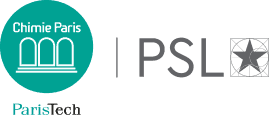Asymmetric Synthesis and Retrosynthesis
Written exam
Principles and tools in retrosynthesis and organic synthesis. Generalities, examples of disconnections and reconnections. Strategies: convergence, selectivities, cascade reactions, synthetic equivalents, polarity inversion. Activation methods, protection/deprotection of the main functional groups. The control of chirality. Resolution (chemical, enzymatic, chromatographic). The use of chirons. The use of chiral auxiliaries. Asymmetric catalysis.
Selected applications in the pharmaceutical and agrochemical industry will document this course.
To recognize the importance of chirality in organic synthesis and for the bioactivity of molecules. To analyze and understand the elements of stereochemistry of the reactions. To know the main asymmetric catalytic or non-catalytic synthesis methods used in the pharmaceutical or agrochemical industry. To recognize and analyze key milestones and important motives in multi-step asymmetric syntheses. To plan a viable synthetic strategy for a target molecule by performing consistent disconnections, and proposing a detailed synthetic approach.
Teaching language: FR
